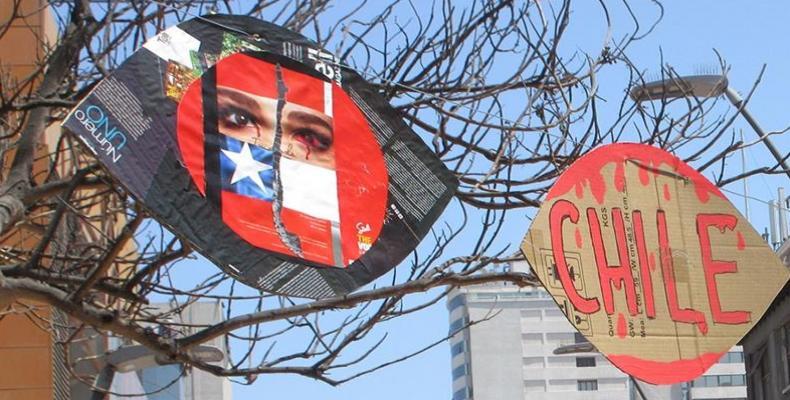Santiago de Chile, November 24 (RHC)-- Police in Chile continue to crack down on protests with contentious projectiles, despite the official suspension of their use this week in all but the most extreme situations.
The projectiles -- circular rubber-and-metal projectiles called "balines" -- have caused the majority of the more than 280 eye injuries incurred since the protests over inequality and the ensuing crackdown began in October, according to health professionals.
Carabineros police director Mario Rozas announced earlier this week that the police were suspending use of the projectiles in all but the most extreme situations, pending further study. The measure was in response to a University of Chile study that concluded the projectiles were 20 percent rubber and 80 percent other materials, including lead.
The balines projectiles would only be used in cases of imminent risk of death to a police officer or civilian, the same conditions required for the use of service weapons, Rozas said Tuesday at a news conference.
Over the weekend in Antofagasta, located about 1,400 km (860 miles) north of Santiago, Doctor Francisco Sepulveda told Al Jazeera: "They are still using the projectiles. The suspension changed nothing." Sepulveda is one of the local doctors working alongside paramedics, nurses and other medical professionals in an all-volunteer first aid commission treating people injured at protests. It is one of the support efforts by Antofagasta's Emergency and Protection Committee, a grassroots assembly-led coordination initiative set up just days after protests began.
"It seems to us that there is still a de facto state of emergency," Sepulveda said, referring to the official nine-day state of emergency the government decreed in October in response to protests and property destruction. "The repression has continued, and it seems to us it has increased from Carabineros. Politicians talk about peace agreements, but underneath that, the police force continues to repress us," he said.
Dozens of people were hit by the rubber-metal projectiles in the marginalised northern Antofagasta neighbourhood of Bonilla, many of them above the waist and some in the face, said Sepulveda. A child and a teenager were hit in the eye by balines fired by Carabineros. One of them is not expected to regain any vision in the eye. "He was inside. They tear gassed the home. He came outside and was shot in the eye," said Sepulveda.
The Antofagasta regional hospital said on Friday that it treated a total of 37 people who were injured in the context of protests on Thursday, and that five individuals remain hospitalised due to the severity of their injuries.
"It has been systematic over these past five weeks," Natalia Sanchez, an emergency room doctor at the Antofagasta regional hospital, told Al Jazeera of injuries caused by projectiles.
Sanchez has been working overtime for weeks, but not at the hospital. After her day shifts in the emergency room, she joins Sepulveda and other medical professionals on a volunteer basis and helped treat five people for projectile wounds on Thursday night. The suspension announced by Rozas has had no effect, she said.
General Enrique Bassaletti, head of the Carabineros in Santiago's Eastern Metropolitan Zone, confirmed the continuing use of the controversial projectiles in a press conference over the weekend. Carabineros were using them in accordance with the exception to the suspension in various areas where police stations or officers were under attack, he said, adding that rocks can be lethal, too.
While commenting on the case of a Chilean television cameraperson injured Thursday night by one of the projectiles, Basseletti used an analogy that sparked outrage in Chile. He compared police actions to chemotherapy treatment for cancer. "Good and bad cells are killed," he said.
Basseletti later issued a public apology for his cancer analogy but did not retract his other comments on the ongoing use of the controversial projectiles.
Prior to Rozas's announcement on Tuesday, legal actions against the use of projectiles were already under way. Last week, a regional court in Antofagasta ordered Carabineros to stick to protocols, not to fire the contentious projectiles on peaceful protests and to limit the use of tear gas to extreme situations. Several other regional courts around the country have since issued similar orders.
Long-lasting exposure or exposure to a large dose of riot control agents such as tear gas can cause blindness, glaucoma, respiratory failure or death, according to the US Center for Disease Control.


